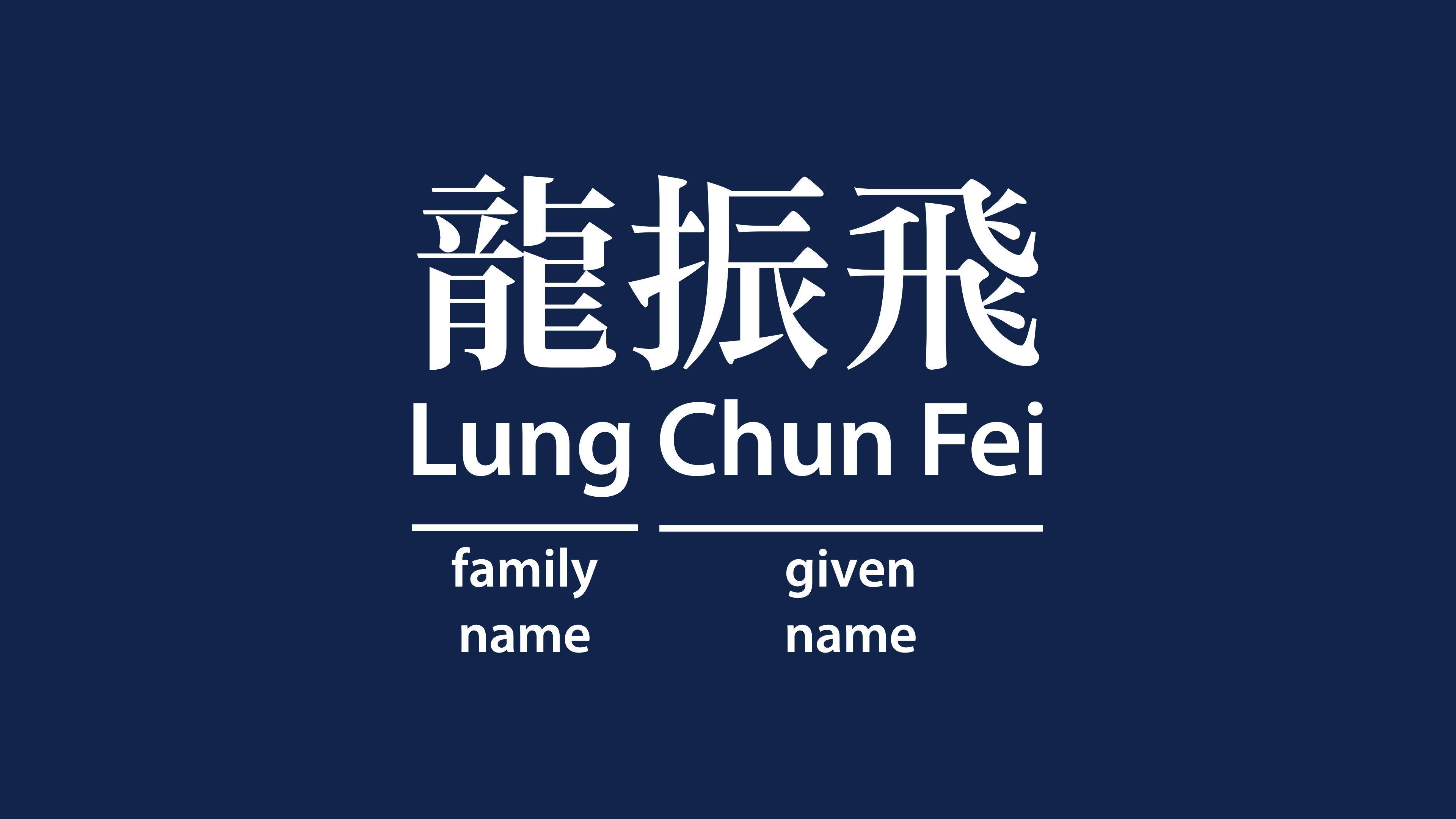Six things you (didn’t) need to know about Chinese names

Whenever I meet new people, the question I get asked most often is the typical “Where are you from?” question that anyone with a diverse cultural background will be intimately familiar with, followed by one or several questions about my name. This article tries to answer at least some of those questions.
In the West, . As you probably already know, this order is generally reversed in East-Asia: the last name comes first and is followed by a person’s first name. This is why China’s president is called “Xi Jinping” (习近平), and not “Jinping Xi”.
To avoid confusion, I’ll use the terms “given name” and “family name” in lieu of first and last name in the remainder of this article. But to immediately add to the confusion again: there are two major exceptions to this rule.
The first exception applies to Chinese who live abroad. Overseas Chinese people who work and live in western countries always use western naming customs when communicating with westerners because that’s what other people (and equally important, IT systems) expect. This is why my byline says “Chun Fei Lung” and not “Lung Chun Fei”, even though “Lung” is my family name.
The second exception applies to Japanese names, which , also start with the given name when used in the west. This practice is slowly changing, but for now we still refer to Japan’s former prime minister as Shinzo Abe rather than “Abe Shinzo” (which is what it should be).
There are two variants of written Chinese, traditional and simplified Chinese. Hong Kong, Macau and Taiwan use traditional Chinese, while simplified Chinese is .
The difference between traditional and simplified Chinese is entirely cosmetic. Most simplified characters look a bit different from their traditional counterparts, but that’s basically it: their meaning and pronunciation remain the same.
For example, my name can be written as 龍振飛 or as 龙振飞, depending on whether the audience is accustomed to traditional or simplified Chinese.
When Chinese names are used in a Western context, they need to be converted into a format that uses characters from the Latin alphabet. This conversion process is called romanisation and it’s honestly a bit of a mess, for two reasons. The first is that Chinese is a complex tonal language, which is hard to express using only Latin characters. The second is that Chinese isn’t actually a language, but a language family that consists of many different languages which sound very different from each other and thus require different methods of romanisation.
Mandarin-speaking countries like China, Taiwan and Singapore nowadays use Pinyin as their official romanisation system, which defines standard mappings between Chinese characters and their transliterated forms in the Latin alphabet.
The nicest thing about Pinyin is that it’s a standard that everyone follows, which is also why “Xi Jinping” is always written the same way, whereas in the olden days Mao Zedong could also be written as “Mao Tse-tung”, leaving you to determine whether those two names refer to the same person.
Places like Hong Kong and your local Chinatown use a combination of different romanisation systems that have been developed over the past few centuries. Wade–Giles and Yale used to be commonly used romanisation systems for , the language that is predominantly spoken in Hong Kong. However, Jyutping is becoming more popular nowadays, as it’s often one of the default input methods for Cantonese on mobile devices.
| System | Romanisation of 龍振飛 |
|---|---|
| Wade–Giles | Lung Chen Fei |
| Yale | Lung Jan Fei |
| Jyutping | Lung Zan Fei |
| Cantonese Pinyin | Lung Dzan Fei |
| ?????????? | Lung Chun Fei |
When Chinese names are romanised, the given name and family name are always separated using a space. This is not the case for the given name and family name, which can be written in three different ways:
-
With a space. This seems to be the preferred method in Cantonese-speaking regions like Hong Kong (which also happens to be written with a space).
-
With a hyphen. This approach seems particularly popular in regions that are in some way related to the Republic of China (Taiwan). Notable examples include Chiang Kai-shek and Taiwan’s current president.
-
Joined together. This is the standard approach taken in China, which is why Xi Jinping’s and Mao Zedong’s given names are written as if they are one word.
Chinese given names and family names both tend to be one to two characters in length. The number of distinct family names is fairly limited – there are only about 4,000 in the entirety of China, compared to more than 6.2 million in the United States – but this is compensated by a large variety in given names.
Unlike western countries, where , in Chinese cultures names still do have a meaning. This is of course due to the fact that names are written using characters that have clear meanings.
Children are typically (but not always) named such that the given name…
-
reflects the expectations that parents have for their child’s life, and also displays the parents’ level of education. For example, educated parents are more likely to use obscure characters that very few people will know how to pronounce!
-
aligns with the family name in some way. For example, my family name is 龍, which means “dragon”. My given name, 振飛, might be loosely translated as “soaring”. The end result is a name that basically means “Soaring Dragon”.
-
forms a play of words, either , in conjunction with the family name, or in relation to relatives. In the latter case, one of the characters is often a generation name that’s shared among siblings and paternal cousins in the same generation (mine is 振), while the other character is used to complement that name. Similarly, if parents have multiple children, they may name them such that their names together form a word.
Chinese names can often be hard to pronounce, especially for those not familiar with the Chinese language. Native Americans solve this problem by translating their names, which would have been a much more elegant solution than what some Chinese people do: that can be used instead of or next to their Chinese name (e.g. as a middle name of sorts).
These English names may be chosen by the person themselves or , and typically fall into one of four categories:
-
Traditional English names that feel somewhat old-fashioned, like Mary, William, Elizabeth or Margaret.
-
Family names used as given names, like Jackson, Cooper, Smith, or Parker.
-
Weird names that may turn heads, like Apple, Cookie, Panda, Dicky, Hitler, Cancer, Pizza, or Water.
-
Contemporary names, like Emma, Noah, or Jimmy.
Just to be clear: I don’t have an English name and if I did have one it would likely fall into the third category. 🤡


